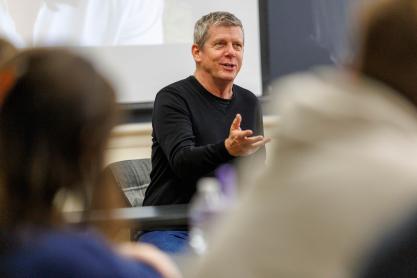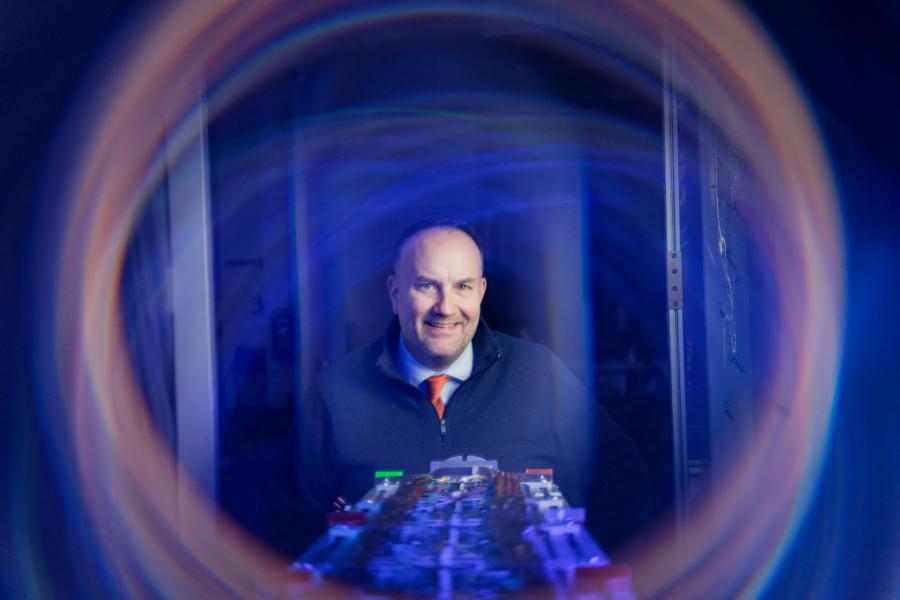In the old Coca-Cola building in downtown Charlottesville, nestled between a bike and smoothie shop, is one of the more unassuming operations you’ll come across.
In fact, until two years ago, the outfit only had a small, weather-beaten decal on its front door.

Executive Director Richard W. Chylla says “making the world a better place” is the UVA Licensing & Ventures Group’s mission. (Contributed photo)
But what the University of Virginia Licensing & Ventures Group has forsaken in presence and aesthetics, it has more than made up for in real-world impact.
Closing in on its 50th anniversary, the group is helping countless UVA researchers obtain patents for their inventions and form start-up companies, improving the lives of people around the globe – and growing the University’s research reputation in the process.
“‘Making the world a better place’ is certainly a cliche,” UVA Licensing & Ventures Group Executive Director Richard W. Chylla said, “but around here it truly is our mission.”
Here’s a look at five technologies that have made the biggest impact since the group’s inception in 1977.
1. Restoring heartbeats
The idea: In the 1980s and ’90s, Dr. Robert M. Berne, the former chair of UVA’s Department of Physiology, and researcher Luiz Bellardinelli discovered the molecule adenosine plays a key role in regulating heart rhythms. Their work showed how adenosine helps restore normal heartbeats in people with certain heart rhythm disorders. As a result, Licensing & Ventures Group assisted Berne in securing a series of patents for a drug called Adenocard.
The impact: Today, hospitals around the world use Adenocard to treat heart conditions. Its success provided a blueprint for hundreds of life-changing innovations developed at UVA. The royalties from Adenocard’s commercialization helped establish the Robert M. Berne UVA Cardiovascular Research Center and continue to fund roughly 60% of its daily operations.
“It is not an exaggeration to state that Adenocard is the standard of care for regulating heart rhythms in hospitals around the world,” Chylla said. “This initial research continues to inspire new generations of investigators in cardiovascular medicine.”
2. Revolutionizing MRI machines
The idea: In the early 1990s, UVA biomedical engineering professor John Mugler III invented pulse sequences that revolutionized MRI machines, making it practical to create high-contrast, 3D images quickly and with high resolution.
The impact: UVA Licensing & Ventures Group patented Mugler’s invention and licensed it to Siemens, the world’s largest industrial manufacturer of MRI machines.
“It became practical to take 3D images, rather than stitch together 2D slices,” said Mugler, who was inducted into the National Academy of Inventors in 2020.
3. Improving childhood literacy
The idea: In 1997, with funding from the Virginia Department of Education, UVA professor Marcia Invernizzi developed the Phonological Awareness Literacy Screening. PALS, as it is now known, was designed to give a snapshot of critical literacy skills at a single moment in time for children in pre-k, kindergarten and grades 1-3.
The impact: At one time, PALS was used in all 50 states and six countries to identify and provide customized learning experiences for young children at risk of becoming poor readers.
“There’s a window of opportunity to get kids reading,” Invernizzi told UVA Today in 2013. “I really felt passionate about trying to do something in my own community.”
Since Invernizzi’s retirement in 2018, PALS has changed its name within the state to the Virginia Assessment of Language & Literacy Screening System, or VALLSS.










